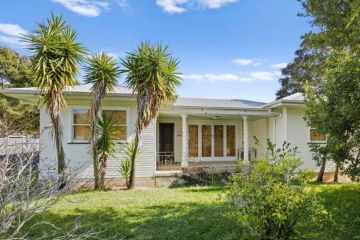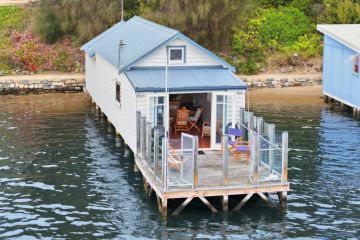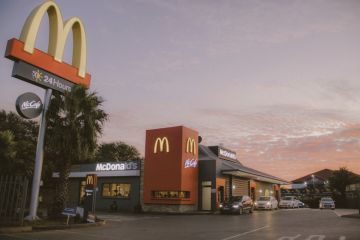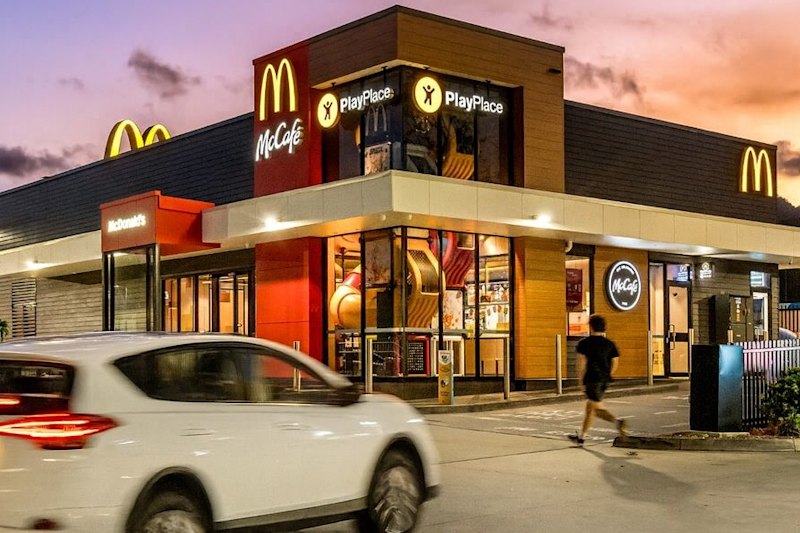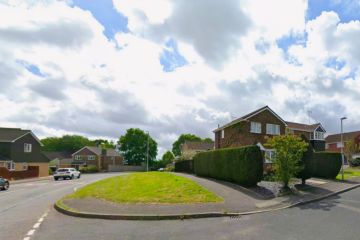A beginner's guide to Sydney and its different regions
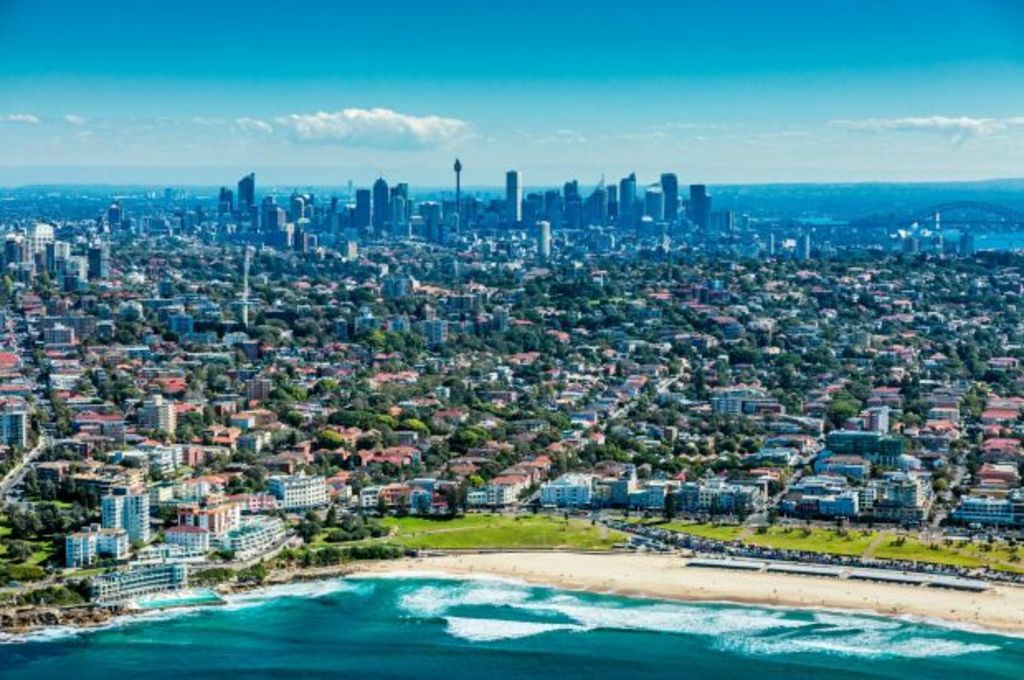
Finally, it’s happened. Australia’s ever-encroaching economic amoeba, Sydney, has enveloped you in its traffic-snarled folds.
But with moving to Sydney there comes the difficult choice. Which tribe to join? Which set of suburban stereotypes to embrace?
The CBD and Inner-East
 Shops lining Stanley Street, Darlinghurst. Photo: Christopher Pearce
Shops lining Stanley Street, Darlinghurst. Photo: Christopher Pearce
Sydney’s CBD offers harbour views, brand new shiny high-rise apartments, lockout laws and those brand new rentable bicycles. But it’s a ghost town on the weekends as most people clear out, except for tourists.
The good news is you will probably be able to walk to work. On the other hand, to afford a room you might have to share it with someone else.
East of the CBD offers more character. In Surry Hills you’ll find cashed-up espresso-drinking hipsters who appear to spend their days cafe-hopping. Down the road is the somewhat grungier Darlinghurst, which was once a red-light district and then the flashier areas of Potts Point and Elizabeth Bay, with their beautiful art deco apartments and harbour views. If you like eating out, going to bars and mini-schnauzers this part of town is a winner.
Move here if you like: Walkability, living in apartments, having everything on your doorsteps, and experiencing crowds in day-to-day public spaces rather than just on the train.
Avoid if you like: Space, quiet, affordable rent, staying out after 1am.
- Related: The worst thing about Sydney suburbs
- Related: Thing all Northern Beaches residents know
- Related: Sydney’s most liveable suburbs
Eastern Suburbs:
 A crowded Bondi Beach in summer. Photo: Ben Rushton
A crowded Bondi Beach in summer. Photo: Ben Rushton
Do you like bus rides, the beach, shopping and high house prices? Then this is the area for you.
The eastern suburbs encompasses the backpacker meccas of Bondi and Coogee Beach and the terrifyingly-wealthy and hard-to-get-to Point Piper and Vaucluse.
Closer to the city is Paddington, which is characterised by rows of cute terraces (with multimillion-dollar price tags) and residents brunching in their active wear. There’s basically a pub on every corner, which you’ll find packed to the brim with its rugby union-loving residents on weekends.
Slightly further south is Randwick which is adjacent to the University of New South Wales and distinctly more down to earth. Public transport is largely limited to buses, with the Eastern Suburbs train line stopping at Bondi Junction.
Main hubs: Bondi Junction, Randwick, Eastgardens
Move here if you like: The beach, getting out and about in the sun, being close to UNSW and NIDA, and protein-rich dairy-free smoothies for breakfast – it’s health kick central.
Avoid if you like: Wearing many layers of black, staying indoors, trains, avoiding backpackers.
Northern Beaches
 The Spit Bridge.
The Spit Bridge.
Do you like LONGER bus rides but less populated beaches? Then this is the area for you.
At one end you have Manly, the insular peninsular, where expats flock for the peak Sydney experience and never leave. And at the other end there’s Palm Beach: the perfect spot for those with money and no need to commute. It offers an extensive strip of sand for yoga practice and a lighthouse to look at. In between are suburbs that offer a laid-back vibe with a strong beach culture. If the northern beaches had a motto, it would probably be “families who surf together, stay together”.
This is a train-free zone – there are buses to the city and to Chatswood, and ferries run in and out of Manly. They are subject to the vagaries of peak hour traffic and bad weather, respectively. This area is also home to the longest bus ride in Sydney, the L90.
Main hubs: Warringah Mall and Manly, Mosman.
Move here if you like: More beaches than you can poke a stick at, never leaving Manly, driving, and a friendly and laid-back community.
Avoid if you like: Not getting stuck in traffic, trains, avoiding tourists, especially around Manly.
The North Shore
 The Crows Nest Hotel. Photo: Adam Hollingworth
The Crows Nest Hotel. Photo: Adam Hollingworth
This is where you go once you’ve hit 30 and you’re willing to trade in Saturday morning road rage in Sydney’s eastern suburbs for a more subdued lifestyle and enough parking to go around. But don’t expect to leave.
The north shore includes the harbourside enclaves of Waverton and Wollstonecraft with its ’70s apartment blocks, to the high-density, bustling Chatswood and the old-money, leafy suburbs of Pymble and Wahroonga.
It’s generally considered wealthy and a bit more conservative than some other areas of Sydney – don’t expect a lot in the way of live music venues.
It does, however, have nature in close proximity with the Ku-ring-gai National Park, a great family vibe, particularly at the upper end, and some very good schools.
Main hubs: North Sydney, Chatswood, Hornsby.
Move here if you like: Trains, proximity to the business centres at Chatswood and North Sydney, sprawling mansions on the upper north shore, leafy suburbs.
Avoid if you like: Live music and a bustling night life.
The Inner-West
 Street art in Marrickville. Photo: Louie Douvis
Street art in Marrickville. Photo: Louie Douvis
It’s all about beards, craft beer, students, Thai food, street art and creeping gentrification.
Close to Sydney University, Newtown is the hipster heartland of Sydney and the most left-leaning part of NSW, according to the ABC’s Vote Compass. But as it becomes pricier and more popular, the neighbouring suburbs of Enmore and Erskineville are stepping up to the task.
Famously Italian Leichardt, charming Annandale village and arty waterfront Glebe can all found on the other side of Parramatta Road, while further west dumpling-heavy Ashfield and the key transport hub of Strathfield have plenty to offer as well.
Many parts are also under the Sydney airport flight-path, which can make for some shaky television reception and longish pauses in conversation.
Your public transport options are many and varied – with two train lines, buses and the existing light rail – and there’s a huge range of restaurants and drinking options open late, buoyed by people being pushed out of the CBD.
Main hubs: Newtown, Strathfield, Leichardt.
Move here if you like: A vibrant community, pubs, bars, bands, complaining about the noise from bands, riding a fixie bike, brewerys. aircraft noise.
Avoid if you like: Beach access, national parks, avoiding the grim stretch of concrete which is Parramatta Road.
Parramatta and Western Sydney

Known for its love of RSLs and shopping centres, Sydney’s west is rapidly changing. House prices are rising and it’s brushing off its rough reputation.
Parramatta is seeing a big increase in developments, both residential and commercial – and has been identified as a priority growth area – with a shift towards high-rising living. It’s relatively close to the wealthy, family-oriented areas of Castle Hill and Baulkham Hills, which offer bigger blocks and a bit more space.
There’s plenty to do with the Sydney Festival hosting multiple events locally and the annual Parramasala festival taking place in March. Swimming is once again an option at Lake Parramatta, and you can get out and about in sprawling Parramatta Park.
Further along the train line is Blacktown – quiet and family-oriented – and Penrith, at the foot of the Blue Mountains.
Main hubs: Parramatta, Western Sydney Industrial Area, Penrith CBD, Norwest Business Park.
Move here if you like: Restaurants open late every night of the week, knowing your neighbours, good public transport links.
Avoid if you like: Avoiding traffic, being close to the beach, inner-city amenity, federation-style terrace housing.
The South
 Premier Gladys Berejiklian talking to members of the community in Hurstville. Photo: Daniel Munoz
Premier Gladys Berejiklian talking to members of the community in Hurstville. Photo: Daniel Munoz
Unpretentious and gifted with a train line, south Sydney is more accessible and cheaper, but considered less prestigious, than its northern beaches competition – not that it’s a bad thing.
South Sydney covers everything from Green Square and the Airport down to the Royal National Park, including Rockdale, Hurstville and Cronulla.
The Shire – the Sutherland Shire – has long had a reputation for churchiness and traditional Australiana, and has been nicknamed “God’s Country”, but is also well-liked for its quiet family atmosphere, tight community bonds and low crime rates.
Rockdale and Kogarah have good transport links, and Hurstville has a well-known Chinese community. There are beaches at Cronulla and Botany Bay, and the opportunity to live almost surrounded by the National Park in Bundeena.
Closer to the city is Green Square, which has a swathe of new apartment projects, a relatively-new train line and is set to be the densest precinct of Australia, along with fears about inadequate transport and overcrowding.
Main hubs: Green Square, Hurstville, Cronulla, Miranda.
Move here if you like: Slick, kitted-out apartment developments, particularly around Green Square. Affordable beach access at Sans Souci and Cronulla, and quiet, leafy suburbs in the Sutherland Shire.
Avoid if you like: A bustling nightlife, being close to the action.
The South West
 Freedom Plaza, Cabramatta. Photo: Sahlan Hayes
Freedom Plaza, Cabramatta. Photo: Sahlan Hayes
From Campsie to Campbelltown, the multicultural south west, including Lakemba, Bankstown and Liverpool, is an affordable foodie haven – offering a tasty bargain for those who aren’t that hung up on living in the more fashionable parts of Sydney.
With good train links – Lakemba is 30 minutes from the city – great restaurants with a diversity of cuisines and a working-class family vibe, each suburban pocket has its own personality.
El Jannah is particularly famous for its Halal Snack Pack, and Cabramatta has been known for years as a centre for the Vietnamese community.
There’s a lot of high-rise development around Canterbury and along the Sydenham to Bankstown urban renewal corridor, which has sparked some fears of overdevelopment.
Overall rents in the area are cheaper than many other Sydney suburbs, particularly when you consider the transport options – although there are concerns about the upcoming closure of the train line for the Metro upgrades.
Hubs: Bankstown, Liverpool, Cabramatta, Campbelltown
Move here if you like: Affordable rent, halal snack packs, an unpretentious, family vibe.
Avoid if you like: Green space, walkability.
Central Coast
 The Central Coast Sports Stadium at Gosford. Photo: Andrew Meares
The Central Coast Sports Stadium at Gosford. Photo: Andrew Meares
But it’s not in Sydney, you say? Shush. With that kind of attitude we’ll never be able to cling onto the title of Australia’s most populous city. The good news is you can wear shorts and thongs all year round and for all occasions and no one will bat an eyelid.
The Central Coast extends from Woy Woy – which is only an hour from the Sydney CBD by train – to what we’ve dubbed “Basically Newcastle”.
Its main drawcards are its proximity to the beach, family-friendly vibe, access to nature and affordability.
Main hubs: Woy Woy, Gosford, Wyong.
Move here if you like: The beach, affordable rents, reading entire books in one go on the train.
Avoid if you like: Not having to commute, not driving around everywhere, a big range of nightlife and restaurant options.
The Blue Mountains
 A sculpture at Scenic World Katoomba. Photo: Steven Siewert
A sculpture at Scenic World Katoomba. Photo: Steven Siewert
It’s like the Central Coast in terms of natural beauty and the opportunity to spend long periods of time on a train, but with more artists and fewer surfers.
The Blue Mountains still has a hippie contingent (as well as the Winter Magic Festival) and it’s cute, quiet, and very close to nature. It is proving increasingly popular with young families who are priced out of western Sydney, or who want more bang for their buck and can manage the commute.
Because of the restrictions around building in a National Park area there’s a shortage of new properties going in – so while it limits your options, it also limits the potential for overdevelopment.
Main hubs: Springwood, Katoomba
Move here if you like: Clean air, bushwalks, a cute village atmosphere and spectacular scenery.
Avoid if you like: Not having to commute, cold weather.
We recommend
We thought you might like
States
Capital Cities
Capital Cities - Rentals
Popular Areas
Allhomes
More
- © 2025, CoStar Group Inc.
